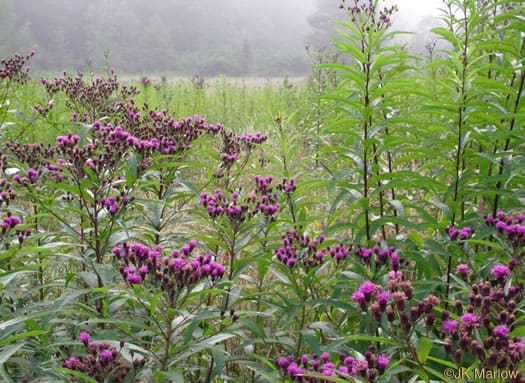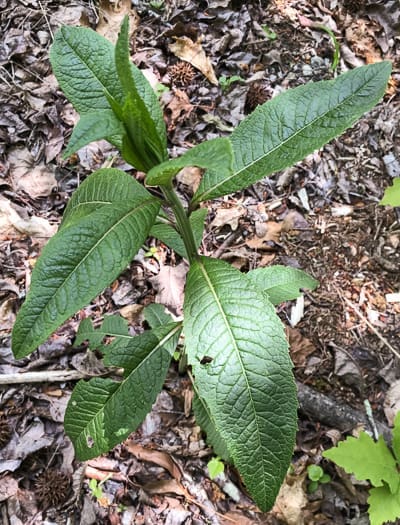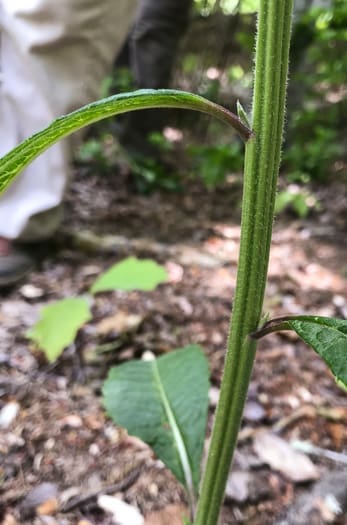Asteraceae
ironweed
Vernonia noveboracensis
Synonyms
Vernonia harperi
Other Common Names
New York ironweed, tall ironweed
Plant Type
Herbaceous Wildflower
Life Cycle
Perennial
Typical Size
5-8 ft. tall
3-4 ft. wide
Tolerant of
Occasional Flooding
Inolerant of
Dry Soil
Propagation
By seed, By cutting, By division
Plant Propagation Notes
Seeds require cold moist stratification. Germination rates are usually low.
Plant Planting Notes
Provide up to 3 ft spacing.
Plants/Diseases
No significant disease or pest issues.
Wildlife Benefits
Nectar/pollen source for pollinating insects, Fruit/seeds for birds
Leaves
Leaves alternate, lanceolate with serrate margins; about 6 inches long.
Flowers
Showy purple/lavender flowers arranged in a cyme.
Fruit
Achene.
Bark
Stems have deep ridges.
Toxicity
No known toxicity.

USDA Hardiness Zones
5, 6, 7, 8, 9
Light Exposure
Full Sun, Part Sun/Shade
Soil Moisture
Moist
Soil Drainage
Well-drained, Poorly Drained
Soil pH
Acidic (less than 6.0)
Native in South Carolina?
Yes
Plant Native Habitat
Old pastures, bottomlands, and streamsides.
Global Conservation Status (NatureServe)
Secure (G5)
Federal Conservation Status (USFWS)
Not Listed
Distribution Notes
Common throughout South Carolina.




